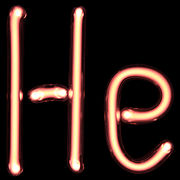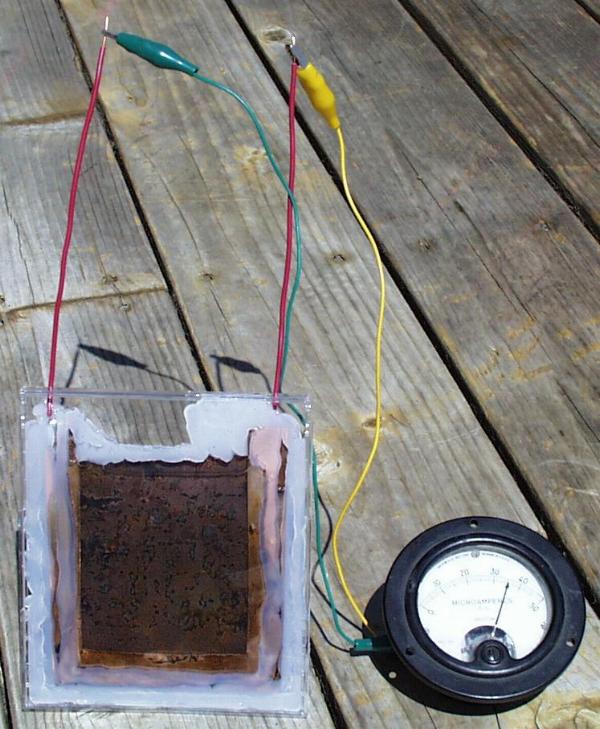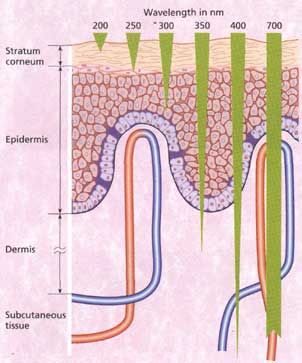



There is no fixed world out there or fixed objects. This is a difficult subject because it does not mean there is nothing there. It means that there are no "things" there with fixed outlines. So, for instance, when we look at a tree we see a certain outline of the tree and we say, "this is a tree"...we draw a picture of the tree and if we did a little test we would find that most of us wouldn't draw the roots...The part above the ground would be larger than the part showing the roots. But in nature, that's not so. The part below the earth is just as large. In fact, in the forest all the trees are interlinked so there is really only one system, only one network, and the trees nourish each other through this network of roots.
So who is to say where one tree begins and another tree ends? Then if you take a cat or a deer looking at a tree, they will see different outlines because their sensory apparatus is different. So what's the correct outline of the tree? Is it mine or is it the deer's or the rabbit's?
This shows you that what we call an object really depends on how we look at it and how we look at it depends on who we are.
But the important thing to recognize is that we don't need to go through this analysis all the time. This is important to understand.... this process of cognition and to understand how cognition is part of all levels of life. Once you have understood that, you can revert back to seeing external objects. You know in the back of your mind there are no really fixed objects but for us, as humans, we all see more or less the same objects. This is important so that we can say, "let's meet at such and such a place at such and such a time." We don't say there really is no such place; we bring it forth together. (1)
"When part of a dandelion is eaten by a rabbit, or when an animal is injured in an accident, those structural changes are not specified and directed by the organism; they are not changes of choice and are thus not acts of cognition. However, these imposed physical changes are accompanied by other structural changes (perception, response of the immune system, etc.) that are acts of cognition." (2)
"The question may arise, why is it necessary to make contactwith the universal life energy? Are we not in direct and constant communication with it at all times? Yes, but we are not concious of it. On the contrary, we conciously beleive we are independant of it, that we have a life force of our own. We think we are seperate from all power. Therefore we need to reestblish on the mental plane that which was lost there, though we never lost that contact on the spiritual plane."
" There are different methods of contacting Primal energy. The easiest and the simplest way is through mental contact. In order to do it, we must relax completely as we can, physically, mentally, emotionally. And when we feel harmony within us then we must say to ourslves " I am one with the universal life energy it is flowing through me now, I feel it"
"In order to overcome that difficulty and enable everybody, even the most skeptical and timid, to make successful that conciouss contact with the universal life energy, there is another method of pure physical contact, based on pure physical laws. That second method has this advantage over the mental one, that it does not require any faith in it. It works for the reason that the physical laws are put into operation, and the physical contact with the universal energy is made, not because we think it or want it, but because we cannot help it." (3)
True Dao is not a way that can be conceptualized.
Its true name has no identity.Nameless is the origin of Heaven and Earth.
Name is the mother of the ten thousand.We are told, at the very start of the Daodejing, that Dao, as a model for life and the human spiritual path, is fundamentally non-conceptual and/or non-dualistic. We are told implicitly that we (the reader [de]) are inherently an inseparable part of true Dao whose activity (wuwei) is ungraspable – names, concepts and words fail to capture “it” (Dao) or “us” (de) in an enduring way. We are invited to embrace the paradox that unknowing is wisdom. Our path is natural and inherent - not something we are mandated to search for, discover, struggle with or master. The title of this text is the Daode classic. The fundamental teaching of wuwei is that Nature (Dao) and self (nature: de) are arising naturally and resolving naturally. (Liu Ming)
So what other parallels
and connections
can be poetically strung through
or seen true
in our two sciences?
 Humans have moved beyond themselves into something else... we can now channel life without the emotional-energetic and physical relationships that we define ourselves by. Interesting no? Check out this crazy bio-technology... they call it a 'spermatozoa', 'sperm' for short.
Humans have moved beyond themselves into something else... we can now channel life without the emotional-energetic and physical relationships that we define ourselves by. Interesting no? Check out this crazy bio-technology... they call it a 'spermatozoa', 'sperm' for short.


"Spike comments on the images: Most are from scans of 35 mm transparencies but some are ex-Coolpix 4500/5000 or D70. All have been spruced up, to some extent, in Photoshop 7. The low-power Rheinberg shots were mostly done with a Zeiss Tessovar, otherwise with Luminars on an Ultraphot IIIB or a Leica MZ 95 stereo. The rest are ex-Zetopan (all the anoptral contrast), Ultraphot III or Photomic. III."
 to describe the insertion of genetic proteins into cells by way of either a virus or a variety of other, less successful methods like direct insertion of the genetic material.
to describe the insertion of genetic proteins into cells by way of either a virus or a variety of other, less successful methods like direct insertion of the genetic material.
- Short-lived nature of gene therapy - Before gene therapy can become a permanent cure for any condition, the therapeutic DNA introduced into target cells must remain functional and the cells containing the therapeutic DNA must be long-lived and stable. Problems with integrating therapeutic DNA into the genome and the rapidly dividing nature of many cells prevent gene therapy from achieving any long-term benefits. Patients will have to undergo multiple rounds of gene therapy.
- Immune response - Anytime a foreign object is introduced into human tissues, the immune system has evolved to attack the invader. The risk of stimulating the immune system in a way that reduces gene therapy effectiveness is always a possibility. Furthermore, the immune system's enhanced response to invaders it has seen before makes it difficult for gene therapy to be repeated in patients.
- Problems with viral vectors - Viruses, while the carrier of choice in most gene therapy studies, present a variety of potential problems to the patient --toxicity, immune and inflammatory responses, and gene control and targeting issues. In addition, there is always the fear that the viral vector, once inside the patient, may recover its ability to cause disease.
- Multigene disorders - Conditions or disorders that arise from mutations in a single gene are the best candidates for gene therapy. Unfortunately, some of the most commonly occurring disorders, such as heart disease, high blood pressure, Alzheimer's disease, arthritis, and diabetes, are caused by the combined effects of variations in many genes. Multigene or multifactorial disorders such as these would be especially difficult to treat effectively using gene therapy.
- Chance of inducing a tumor (insertional mutagenesis) - If the DNA is integrated in the wrong place in the genome, for example in a tumor suppressor gene, it could induce a tumor. This has occurred in clinical trials for X-linked severe combined immunodeficiency (X-SCID) patients, in which hematopoietic stem cells were transduced with a corrective transgene using a retrovirus, and this led to the development of T cell leukemia in 3 of 20 patients.[2]
- Religious concerns - among people who believe that humans were created in God's image, some may consider the alteration of an individual's genes as tampering or corrupting God's work.
Deaths have occurred due to gene therapy, including that of Jesse Gelsinger.
from:http://www.ornl.gov/sci/techresources/Human_Genome/medicine/genetherapy.shtml (1)
"Knowing the precise sequence of genetic "letters" that make up the alphabet of the microbes' genes should now allow scientists to design effective drugs and vaccines against the three killers. At present, there are no vaccines or cheap, effective remedies against any of the parasites, each transmitted by the bites of different insects in some of the poorest countries." (The Independent Online)I don't see anything inherently wrong with genetic manipulation. I see it as a naive and ultimately arrogant science that is either doomed to horrible failure or a very long and challenging road ahead of itself, if it is to succeed. I say this, realizing my own arrogance in asserting such a statement without much knowledge of the subject. To be honest, I feel like this kind of research is a waste of money and is just another march against disease in the name of science and human achievement. The article offers no real evidence for the idea that any genetic research will actually be a worthwhile and fulfilling scientific project. They also don't offer the idea or search for any other idea that doesn't require modern scientific science and pharmaceutical drugs. What about helping these extremely poor people get clean water? and help them to reduce the breeding of these insects in some simple, natural way?
In a semiconductor, the distance between the valence band and the conduction band is fairly small. At a low temperature the semiconductor has a completely filled valence band. There are no empty energy positions available for the electrons to be accelerated in. Therefore, at low temperatures the semiconductor behaves like an insulator. At room temperature, the atoms in the semiconductor material vibrate enough so that a few electrons may escape from their positions in the valence band into unoccupied positions in the conduction band. The conduction at room temperature, however, is so small that no significant current can be said to pass. (1)
Arsenic - 33
atomic mass - 74.92
Three metalloidal forms of arsenic with different crystal structures are found free in nature (the minerals arsenic sensu stricto and the much rarer arsenolamprite and pararsenolamprite), but it is more commonly found as arsenide and arsenate compounds. Several hundred such mineral species are known. Arsenic and its compounds are used as pesticides, herbicides, insecticides and various alloys.
Elemental arsenic is found in many solid forms: the yellow form is soft, waxy and unstable, and is made of tetrahedral As4 molecules similar to the molecules of white phosphorus. The gray, black or 'metallic' forms have somewhat layered crystal structures with bonds extending throughout the crystal. They are brittle semiconductors with a metallic luster.
Gallium arsenide is an important semiconductor material, used in integrated circuits. Circuits made using the compound are much faster (but also much more expensive) than those made in silicon. Unlike silicon it is direct bandgap, and so can be used in laser diodes and LEDs to directly convert electricity into light. (2)
And by the way, I prefer to learn about semi-conductors from Britney Spears (acutally, this is not a very helpful site). If you really want a great lesson in semi-conductors, I reccomend this site: Nobel Prize.org - Semi-Conductors


Helium II is a superfluid, a quantum-mechanical state of matter with strange properties. For example, when it flows through even capillaries of 10−7 to 10−8 m width it has no measurable viscosity. However, when measurements were done between two moving discs, a viscosity comparable to that of gaseous helium was observed. Current theory explains this using the two-fluid model for helium II. In this model, liquid helium below the lambda point is viewed as containing a proportion of helium atoms in a ground state, which are superfluid and flow with exactly zero viscosity, and a proportion of helium atoms in an excited state, which behave more like an ordinary fluid.[7]
Helium II also exhibits a creeping effect. When a surface extends past the level of helium II, the helium II moves along the surface, seemingly against the force of gravity. Helium II will escape from a vessel that is not sealed by creeping along the sides until it reaches a warmer region where it evaporates. It moves in a 30 nm-thick film regardless of surface material. This film is called a Rollin film and is named after the man who first characterized this trait, Bernard V. Rollin.[8][9] As a result of this creeping behavior and helium II's ability to leak rapidly through tiny openings, it is very difficult to confine liquid helium. Unless the container is carefully constructed, the helium II will creep along the surfaces and through valves until it reaches somewhere warmer, where it will evaporate. Waves propagating across a Rollin film are governed by the same equation as gravity waves in shallow water, but rather than gravity, the restoring force is the Van der Waals force.[10] These waves are known as third sound.

"The Chikyu was delivered to its owners in 2005, but since then it has been carrying out a range of system integration tests. These were followed by a shakedown cruise, undertaking test drilling off the Shimokita Peninsula to ensure that everything is working satisfactorily before it commences full operations in 2007. It is anticipated that future operations will be carried out off Kenya as well as off Australia."
"Their achievement marks the launch phase of the Nankai Trough Seismogenic Zone Experiment (NanTroSEIZE), a major research initiative into the triggers and mechanisms of earthquakes and tsunamis supported by the Integrated Ocean Drilling Program (IODP). NanTroSEIZE is expected to continue until 2012, with the ultimate objectives of drilling across the plate boundary fault responsible for magnitude 8 earthquakes to sample the rocks and fluids in the fault, and to place instruments within it to monitor activity and conditions leading up to the next great earthquake."It appears as though Chikyu has only just begun to explore the Earth's crust.
The halogens or halogen elements are a series of nonmetal elements from Group 17IUPAC Style) of the periodic table, comprising fluorine, F; chlorine, Cl; bromine, Br; iodine, I; and astatine, At. The undiscovered element 117, temporarily named ununseptium, may also be considered a halogen. (old-style: VII or VIIA; Group 7
The group of halogens is the only group which contains elements in all three familiar states of matter at standard temperature and pressure.
Chlorine (IPA: /ˈklɔəriːn/, Greek: χλωρóς chloros, meaning "pale green"), is the chemical element with atomic number 17 and symbol Cl. It is a halogen, found in the periodic table in group 17 (formerly VIIa or VIIb). As the chloride ion, which is part of common salt and other compounds, it is abundant in nature and necessary to most forms of life, including humans. In its common elemental form (Cl2 or "dichlorine") under standard conditions, it is a pale green gas about 2.5 times as dense as air. It has a disagreeable, suffocating odor that is detectable in concentrations as low as 3.5 ppm[1] and is poisonous. Chlorine is a powerful oxidant and is used in bleaching and disinfectants. As a common disinfectant, chlorine compounds are used in swimming pools to keep them clean and sanitary. In the upper atmosphere, chlorine based molecules have been implicated in the destruction of the ozone layer. (gotta love Wikipedia)






 And I can only stand in insanity with the poetic truths pointed out by Terence McKenna who, in a flashing-back today while I listened to a talk of his on the world and it's double, says, "A true language is beheld... I think that the real nub that we are trying to get at is that the world is mental... in some way that we do not yet understand... the world is made of language... so... whenever we get into these discussions about reality or effects in space and time, we are operating outside this assumption that the world is made of language... I mean do we really need to believe in the existence of distant galaxies like GNC-245 if in fact the world is being produced in the cerebellum as a phenomenon of language?"
And I can only stand in insanity with the poetic truths pointed out by Terence McKenna who, in a flashing-back today while I listened to a talk of his on the world and it's double, says, "A true language is beheld... I think that the real nub that we are trying to get at is that the world is mental... in some way that we do not yet understand... the world is made of language... so... whenever we get into these discussions about reality or effects in space and time, we are operating outside this assumption that the world is made of language... I mean do we really need to believe in the existence of distant galaxies like GNC-245 if in fact the world is being produced in the cerebellum as a phenomenon of language?"


